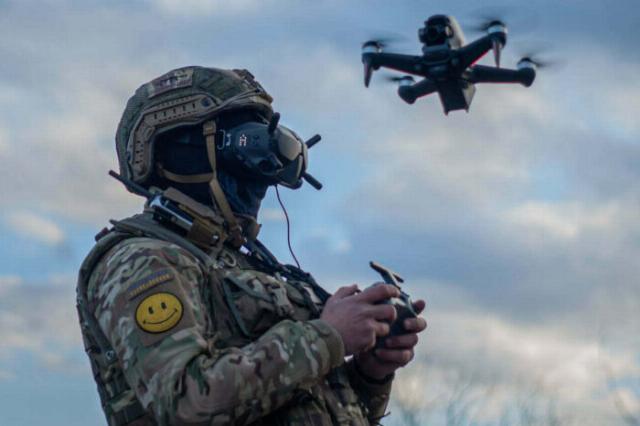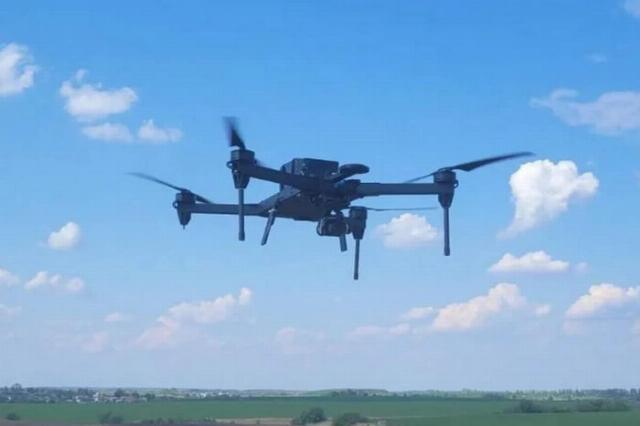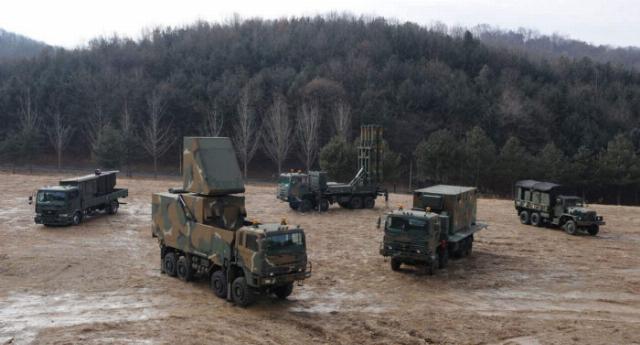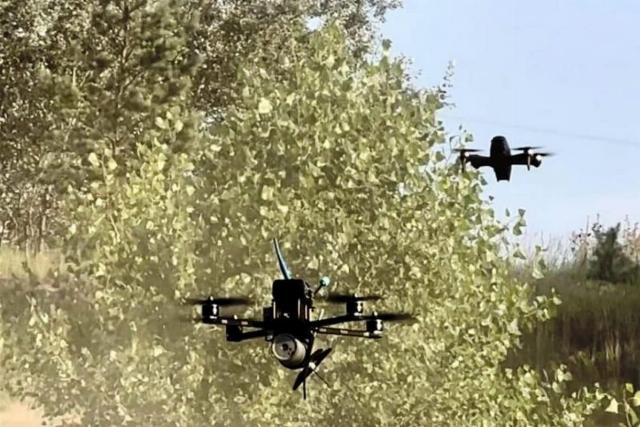According to foreign analysts, the war in Ukraine has become an incubator for the use of artificial intelligence (AI) in combat operations. Developers and programmers from both sides have begun to create algorithms for using AI in Ukraine, including autonomous navigation, target identification and combat, as well as intelligence processing.
According to the available data, the AI used is beneficial on a small scale, but ultimately it is a maturing technology that requires further development in order to fully realize its potential. However, properly deployed and managed AI can improve rapidly, so the use of AI in Ukraine should be monitored to understand its useful applications, as well as its limitations.
AI in Ukraine: The tactical aspect
As it seems to experts, the most effective applications for artificial intelligence in Ukraine can be observed on the example of a mass of small unmanned aerial vehicles (UAVs), which are produced monthly by thousands of volunteers and small companies created to meet the needs of the war. The presence of Russian electronic warfare assets along the front line is significant. In some areas, in order to more completely suppress satellite navigation signals, the Russian electronic warfare system is layered and operating at full capacity. In this case, the units of the Armed Forces of Ukraine have to sacrifice drones to check the activity of Russian electronic warfare. It is noted that the effects of electronic warfare are sometimes disabled. This is usually done before the Russian Air Force strikes. For this reason, autonomous navigation using AI has been introduced into some small drones. AI usually uses learning algorithms based on terrain imagery, which allows UAVs to navigate without satellite guidance.
Both Russia and Ukraine have developed algorithms to help target UAVs with a first-person view (FPV). One of the Russian systems is called Gadfly. Its AI homing capabilities were publicly demonstrated in the summer of 2023. Ukraine has developed and implemented the Saker drone, which uses AI to determine the location of targets.

UAV with a first-person view
It has been noticed that since the beginning of 2024, the number of videos showing drones with limiting frames has increased. It is assumed that the use of AI for targeting using computer vision is based on the method of "bounding box" around the identified object. Such frames take the form of a green rectangle that appears around the target to indicate its location and the degree of confidence that this is what the computer is processing. Their presence suggests that the algorithm determines the location of the object in question, which means that the help of the drone from the algorithm helps to track the target and hit it.
It is worth noting that many of these efforts are undertaken by small volunteer organizations. The Gadfly UAV, as well as the Saker, were developed by volunteers. Nevertheless, their efforts are not inferior to those of larger defense enterprises or AI companies, but this may mean that systems are being developed using commercially available algorithms and that there are fewer AI specialists capable of working on them than we would like. This can affect the pace of development and iteration cycles that are used to quickly bring algorithms and software into line with the standards that users expect.

Ukrainian UAV "Saker"
According to Will BLYTHE, CEO of Arondite, a defense company working with AI in Ukraine: "In Ukraine, technology and the market are developing rapidly and are only accelerating. To be of any importance, you must quickly commit yourself, create together and transfer a minimally finished product into the hands of users. That's when the most important part of the job actually begins: collecting an array of real reviews, incorporating them into your product, and reintroducing something before the world changes again. This requires pragmatic and dedicated AI engineers who are focused on results."
Deep strokes
On April 2, 2024, CNN published a report indicating that Ukrainian drones used to strike Russian refineries used computer vision to autonomously navigate to their targets and defeat them. In fact, this is an AI-enabled version for radar-based terrain detection, corresponding to the capabilities of Tomahawk (TLAM) land-based cruise missiles. However, it is worth noting that it is unclear whether the computer vision of Ukrainian attack drones allows flights taking into account the terrain, as in the case of TLAM.
Russia also uses the Lancet barrage munition, which in some cases is equipped with Nvidia TX2 Jetson, a small computer designed to use AI at the edge of the network. This means that the Lancet, which has a range of 50 km, may also be capable of some form of autonomous navigation. Both cases point to the potential of AI in increasing the resistance of high-precision impact munitions to interference and counterfeiting.
Air defense
The Ukrainian company Respecher has developed an application to simulate the voices of celebrities using AI. The technology has found a new unexpected application in Ukraine, where it is used as part of the acoustic detection system "Sound". The algorithms were trained on the sounds of Russian cruise missiles and connected to acoustic sensors located throughout Ukraine. The network is designed to track Russian missiles and indicate their flight path. Theoretically, this allows the APU to carefully position its radars and air defense systems, and use "Sound" to monitor any potential weaknesses in the range of its radars. Again, this system was developed by volunteers from Respecher, the IT company i3 and the Territorial Defense Forces of Ukraine.
Foreign analysts also drew attention to a Russian media report from May 2023 about the S-350 air defense system, which autonomously hit a target with the help of AI in Ukraine. Although there were few details, if the system actually performed this task with the help of AI, it is believed that this opens up interesting prospects. Theoretically, it is possible to combine data from several sensors into a single recognized aerial picture.
It is claimed that the US Army's ICBS anti-missile network achieved a similar result in 2020, when it combined Patriot and Sentinel radar data to defeat a pair of cruise missiles. It is unclear whether ICBS uses any kind of machine learning to process guidance information, but similar effects can be achieved by combining AI-enabled sensors.

Russian S-350 air defense System
Using advanced computing and sets of algorithms developed to interpret the data generated by radars and other sensors and combine these outputs into a single picture would allow this to be done. Presumably, if we go even further and allow AI to make decisions about air defense actions, this may be more successful than the actions of human operators, especially after several training cycles.
AI analysis in Ukraine
According to Western experts, AI in Ukraine demonstrates its current capabilities in a military context. However, many of these efforts are still regarded as a demonstration of the concept or an insufficiently developed level by some industry standards. Proper infrastructure allows for rapid updates and iterations of algorithms to improve their capabilities after each new operational experience. The extent to which either party has this infrastructure or the engineers needed to fully unlock the potential of AI-enabled capabilities is unclear. Nevertheless, it seems that having many different clusters innovating independently of each other is valuable for the rapid development of AI in the interests of military applications.
Technically presented systems provide resistance to electronic warfare and, probably, improve flight performance and interaction with equipment. However, so far they do not present a game-changing opportunity. Along with the videos of FPV strikes, there are many other videos of conventional artillery or high-precision strikes on conventionally scouted targets. Nevertheless, the application described above gives an idea of the potential of AI in Ukraine to shape the nature of warfare and indicates where changes are likely to be observed.
Based on the materials of the resource edrmagazine.eu

